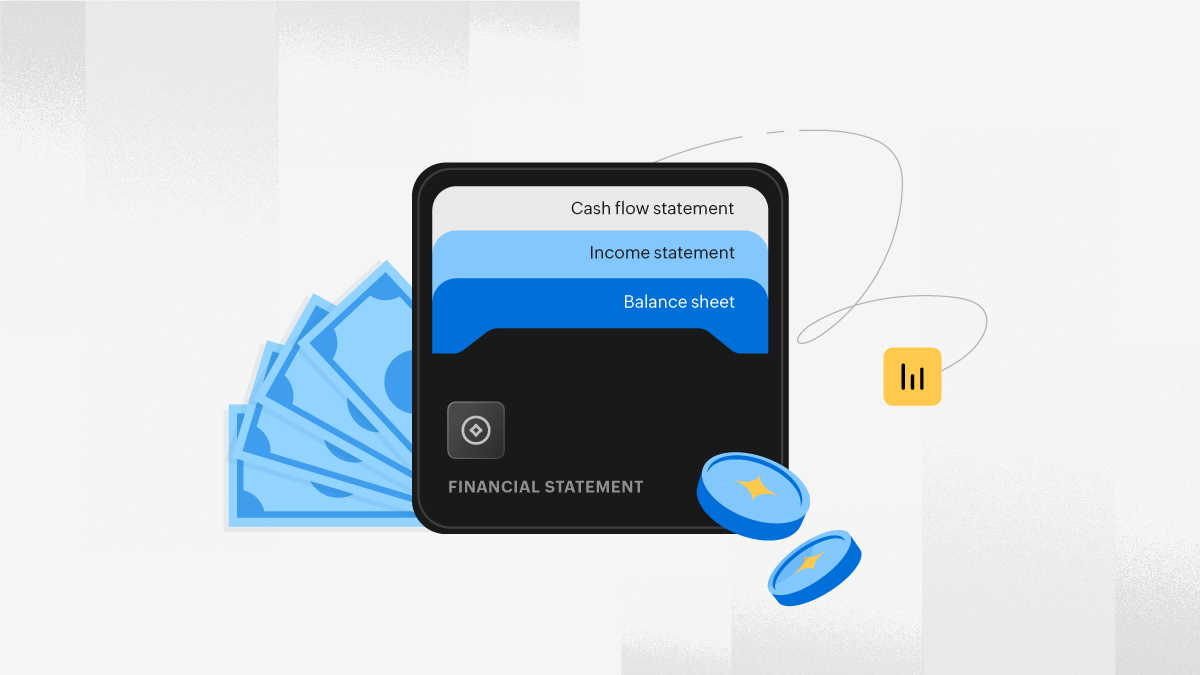- HOME
- Financial Management
- Financial statements: What they are and how to read them
Financial statements: What they are and how to read them

Running a business without looking at your financial statements is like driving with your eyes closed. You might know you’re moving, but you won’t know if you’re heading in the right direction.
Your financial statements are your map. They show where your money came from, where it went, and what’s left — helping you understand your business beyond just sales and expenses.
What exactly are financial statements?
Every transaction your business makes — a sale, a loan, a rent payment — leaves a financial trail. Financial statements pull those trails together into three key reports:
Balance sheet – a snapshot of what you own and what you owe.
Income statement – your profits and losses over time.
Cash flow statement – how cash actually moves in and out.
Together, they don’t just tell you what happened — they tell you why it happened.
The balance sheet
If your business had a photo, the balance sheet would be it. It captures a single moment — say, an instant in the last day of the month — and shows your company’s financial position right then.
It’s built around a simple idea:
Assets = Liabilities + Equity
Assets are what your business owns — things like cash, inventory, or property.
Liabilities are what you owe — loans, credit, or taxes.
Equity is what’s left after you subtract what you owe from what you own.
When you look at your balance sheet, you’re really asking: If I stopped today, how much would my business be worth?
The income statement
If the balance sheet is a snapshot, the income statement is a highlight reel. It covers a period — a month, quarter, or year — and shows how your business performed.
It starts with your revenue (everything you earned), subtracts your expenses (everything you spent), and lands at your profit or loss.
For example:
You run a design studio. You earned $50,000 this quarter, spent $35,000 on salaries and software, and have $15,000 left. That $15,000 is your profit — the part that rewards your effort.
The income statement tells you if your work is turning into real earnings or if costs are eating into your margins.
The cash flow statement: the real money shot
Profit doesn’t always have to mean cash in hand. Maybe clients haven’t paid yet, or maybe you just bought new equipment. That’s why you need the cash flow statement — it shows how money actually moves.
It’s divided intothree parts:
- Operating activities: everyday income and expenses.
Investing activities: buying or selling long-term assets.
Financing activities: loans, repayments, or capital raised.
You can be profitable on paper but still short on cash. The cash flow statement shows you why — and helps you plan around it.
How they fit together
Each statement offers one piece of your financial puzzle:
The income statement tells you if you’re profitable.
The balance sheet shows your financial position.
The cash flow statement shows your liquidity — your ability to meet short-term goals.
When you interpret them together, you can see patterns:
High profit but negative cash flow? You might be collecting payments too slowly.
Positive cash flow but declining equity? Maybe you’re funding operations with debt.
Reading these connections helps you make better, data-driven decisions and helps you address risks early on.
Making sense of it all
You don’t need complex formulas to understand your reports. Start simple:
Are revenues growing faster than expenses?
Are assets expanding faster than liabilities?
Is cash flow consistently positive?
Is your equity (owner’s stake) increasing each year?
Reviewing these monthly gives you early signals about the direction your business is taking. You’ll know where you’re earning well, where you’re overspending, and what areas your business can grow further.
How smarter systems help
Keeping track of three reports manually isn’t easy — and it doesn’t have to be. That’s where modern accounting softwares, that are built to simplify reporting, come in. You automatically compile your balance sheet, income statement, and cash flow report in real time. You can view trends, generate charts, compare multiple periods, and even use reporting tags to pull divisional or project-level insights — all from one place. It’s accounting that actually makes sense — even if you don’t love accounting.
Simply put
Financial statements are your business’s truth-tellers.
The balance sheet shows what you own and owe.
The income statement shows what you earned and spent.
The cash flow statement shows what you really have on hand.
Read them often. They won’t just tell you where your business stands — they’ll show you where it’s heading.